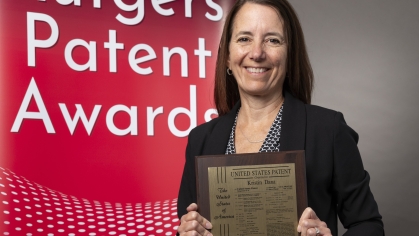Rutgers Team Wins USDOT Competition to Develop and Implement an Advanced Bridge Technology Clearinghouse Program

A $5 million cooperative agreement to carry out activities to continuously identify, evaluate, prioritize, publish, and move new and advanced bridge approaches, technologies and materials to full practice (bridge areas from stem to stern). The agreement also supports the creation of a digital platform to provide robust and unbiased information about innovations in all aspects of bridge technology to facilitate their acceptance and implementation.
The School of Engineering Center for Advanced Infrastructure and Transportation (CAIT) is the lead contractor on a $5 million, five-year, multi-institutional USDOT Advanced Bridge Technology Clearinghouse (ABTC) cooperative agreement, with the Department of Civil and Environmental Engineering (CEE) professor and chair Nenad Gucunski serving as project principal investigator (PI).
The project aims to improve and extend the life of existing and future bridges by providing a digital clearinghouse for the bridge and structure stakeholders containing up-to-date information on advanced bridge technologies, everything from design, construction, and bridge management systems to condition assessment, monitoring, innovative materials, and more.
As PI, Gucunski will lead a multi-institutional research team that includes researchers from Rutgers, Arizona State University, Michigan State University, Prairie View A&M, Texas A&M, and Texas Transportation Institute – all of which are members of the National Center for Infrastructure Transportation (NCIT), a USDOT University Transportation Center led by Prairie View A&M, and industry partner AssetIntel.
A Hub for Bridge Technology and Best Practices
By noting that more than 40% of the nation’s bridges are at least 50 years old and that over 7% are viewed as structurally deficient, a 2021 U.S. infrastructure report card highlighted the pressing need for an innovative bridge technology hub focused on safety and sustainability. Through the ABTC, according to Gucunski, bridge engineers and managers will be able to access the tools and knowledge that embody future-ready best technologies and practices to achieve the USDOT’s strategic goals: safety, climate change resilience, and sustainability.
“The most exciting aspect of the ABTC project is its potential for very practical impacts in the bridge sector,” Gucunski states. “To retain the high performance of existing bridges, whose condition is affected by continuously increasing traffic and environmental loads, and climate change, and to improve the durability, safety, and environmental impact of future bridges, we need innovative technologies.”
While the ABTC platform will employ artificial intelligence (AI) to identify and assess advanced bridge approaches and technologies, their robustness and readiness for implementation will be evaluated by a team of industry and academic experts. In addition, AI-generated queries and navigation guidance will ensure effective and optimal use of the platform.
Gucunski adds that despite significant advances in bridge engineering, a major hurdle exists when it comes to disseminating information and implementing innovative solutions. “I’m thrilled,” he says,” that the USDOT is investing in the development of the ABTC that will serve as an effective tool for the extraction of information about proven advanced technologies.”
The School of Engineering team includes six CEE faculty who are, like Gucunski, affiliated with CAIT – professors P.N. Balaguru; Vassilina Demetracopoulou; Jie Gong; Ali Maher, who is also the director of CAIT; and Tyler Oathes. Research faculty and staff from CAIT, include co-PI Maurizio Morgese, John Braley, and Shane Mott. Jessica Yi-yun Cheng, an assistant professor of library and information science at the School of Communication and Information, will lead efforts related to information science as a project co-PI. Additionally, graduate students will be on board to assist both faculty and staff throughout the project’s duration.


